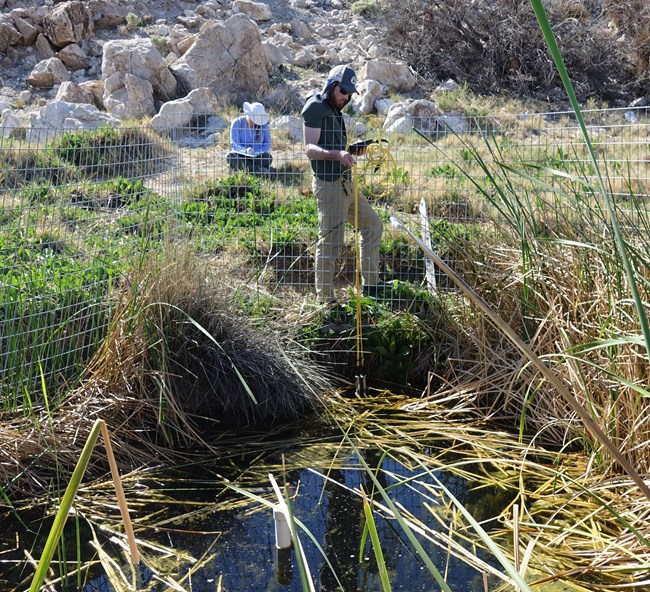
NPS Photo
Overview
Beneath the desert is a vast system of groundwater stored in aquifers—underground layers of unconsolidated, porous, or fractured rock containing water. A natural spring occurs where water breaches the ground.
In the Mojave Desert, springs often represent the only surface water over large areas. As a result, springs are extremely important as habitat to aquatic and amphibian animal species and riparian plant species, and as water sources for terrestrial wildlife. Springs in the western United States support several hundred endemic plant and animal species, some of which are listed as endangered.
Numerous populations of springsnails, fish, insects, and other species rely on these springs for survival. The water quality and spring discharge monitoring in this protocol will allow us to detect habitat changes that could threaten endemic and endangered species in the selected large springs in our network parks.
-
How to Protect and Preserve a Desert Spring
Learn more about desert springs in the Mojave Desert, the life they support, and how we're monitoring them.
- Duration:
- 6 minutes, 8 seconds
Monitoring Objectives
- What is the status of and what are the trends in discharge from each of the selected large springs in the Mojave Desert Network parks?
- What is the status of and what are the trends in water quality and water chemistry in each of the selected large springs in the Mojave Desert Network parks?
- What is the status of and what are the trends in benthic macroinvertebrate communities and springsnail populations in each of the selected large springs?
Reports, Publications, and Datasets
Monitoring protocols describe why and how we collect, manage, analyze, and report monitoring data about the network's Vital Signs. Each protocol consists of a narrative and an associated set of standard operating procedures (SOPs).
Monitoring reports summarize data and findings from our Vital Signs monitoring activities, and monitoring data include final datasets, data packages, and metadata.
Source: NPS DataStore Collection 4275. To search for additional information, visit the NPS DataStore.
Source: NPS DataStore Collection 9376. To search for additional information, visit the NPS DataStore.
Source: NPS DataStore Collection 4279. To search for additional information, visit the NPS DataStore.
Source: NPS DataStore Collection 7917. To search for additional information, visit the NPS DataStore.
Articles
Last updated: December 3, 2024

